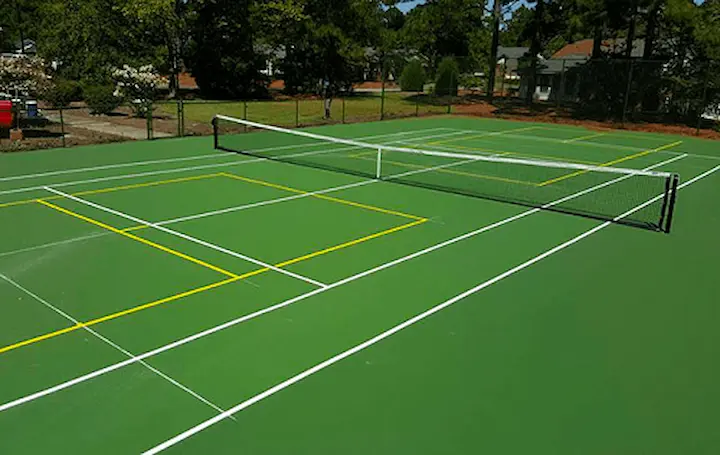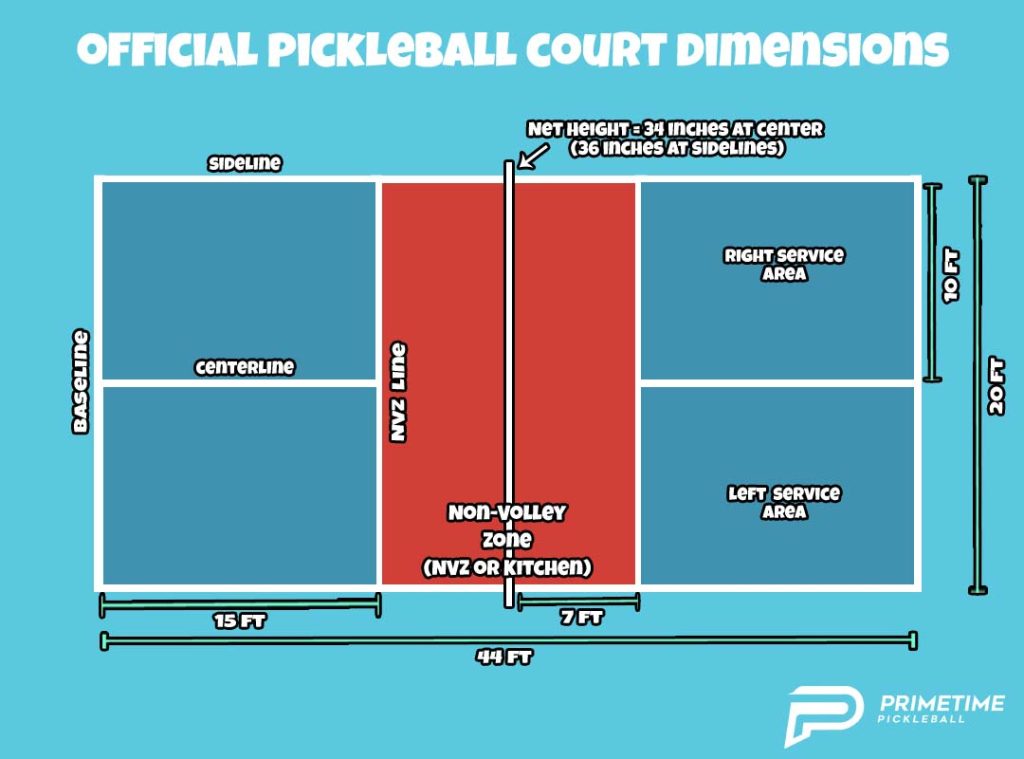What to Expect from Pickleball Judiciaries Design & Building And Construction in Illinois and Midwest
What to Expect from Pickleball Judiciaries Design & Building And Construction in Illinois and Midwest
Blog Article
Key Consider the Building And Construction of Pickleball Courts: From Website Option to Final Finishes
The building and construction of pickleball courts includes a range of essential elements, starting with the choice of an appropriate website that balances access with environmental factors to consider. Vital components such as court dimensions, surface area products, and water drainage systems substantially impact not only the top quality of play but likewise the longevity of the facility. Attention to illumination and ending up touches can raise the overall experience for players and viewers alike. Recognizing how each of these elements interrelates might disclose insights that are typically forgotten, triggering a better exam of best practices in court building.
Site Selection Criteria
When starting the construction of pickleball courts, it is important to pin down the site selection requirements that will make sure ideal playability and availability. The location has to be conveniently reachable for gamers, ideally located near suburbs or recreation center, to encourage engagement.
Furthermore, the surface ought to be level and secure, as uneven ground can lead to safety hazards and influence gameplay. Sufficient drainage is also critical; selecting a site with good water drainage will certainly help maintain court problems during negative weather condition.
Another vital factor to consider is the accessibility of utilities. Accessibility to electrical energy and water is required for lighting and maintenance objectives. In addition, proximity to vehicle parking facilities is crucial, assisting in easy accessibility for gamers and viewers alike.
Environmental factors can not be forgotten; natural color from trees can improve gamer comfort, while exposure to dominating winds may interfere with play. Zoning guidelines and community assistance should be thought about to ensure that the job straightens with local guidelines and gets the support it needs for successful execution. By thoroughly examining these standards, stakeholders can create an inviting and useful setting for pickleball enthusiasts.
Court Capacities and Format
To guarantee ideal gameplay and adherence to laws, the measurements and layout of pickleball courts should be very carefully specified. A basic pickleball court measures 20 feet in width and 44 feet in length for both singles and increases play. The suggested design includes a non-volley zone, commonly described as the "cooking area," extending 7 feet from the web on either side. This area is crucial, as it influences gamer positioning and shot selection - Illinois and midwest.
The web elevation is established at 36 inches at the sidelines and 34 inches at the facility, producing a small dip that influences sphere trajectory. Court markings are equally essential; lines ought to be 2 inches broad and distinct in shade to make certain presence.
In addition, a barrier zone bordering the court is suggested, commonly expanding 5 to 10 feet past the sidelines and baselines to accommodate gamers' activities and improve security. Appropriate layout and measurements not just guarantee compliance with main guidelines however also boost the general playing experience, suiting both entertainment and competitive play. Careful preparation in these areas is paramount to click for source the effective building of pickleball courts.
Surface Product Options
Choosing the best surface area material for pickleball courts is essential for making certain ideal player efficiency and security. The selection of surface can considerably influence gameplay, including round bounce, traction, and gamer comfort.
There are several alternatives available, each with its distinctive qualities. Asphalt is a preferred option as a result of its find out toughness and low upkeep needs. It supplies a solid playing surface area that can withstand numerous weather yet may call for regular resurfacing.
Concrete is an additional commonly used product, offering exceptional long life and a smooth finish. It enables consistent sphere bounce yet can be hard on gamers' joints, making it much less preferable for long-term play without appropriate padding.
For those seeking enhanced convenience and shock absorption, cushioned acrylic surfaces provide a sensible alternative. These surfaces integrate a base layer with an acrylic overcoat, providing improved traction and a softer feeling, which is advantageous for reducing the risk of injuries.
Finally, synthetic turf is gaining grip, particularly for multi-purpose facilities. Its versatility and lower maintenance needs make it an eye-catching option, though it might not provide the very same round reaction as standard tough courts. Cautious factor to consider of these choices will certainly ensure an optimal playing environment.
Drainage and Lighting Considerations
Proper water drainage and reliable lighting are essential parts in the construction of pickleball courts, substantially influencing both playability and safety and security. Sufficient drainage systems prevent water buildup, which can lead to slippery surface areas and damages to the court structure.
Lighting is similarly crucial, particularly for courts navigate to these guys meant for evening use. Correct illumination improves presence, ensuring that players can see the round clearly and minimizing the risk of mishaps. The positioning of lights fixtures must be purposefully planned to get rid of darkness and give even distribution of light throughout the court. LED lights are advised for their power efficiency and durability, using intense illumination while decreasing operational expenses.

Final Surfaces and Maintenance
After resolving water drainage and lights factors to consider, interest turns to the final coatings and continuous maintenance of pickleball courts. Common alternatives consist of acrylic finishings and specialized sports surface areas that supply optimum traction and padding.

Seasonal maintenance may consist of resurfacing every couple of years, depending on use and environmental aspects. Properly keeping nets, court lines, and bordering locations is equally crucial to give a risk-free and delightful playing experience. By buying high quality surfaces and sticking to a structured maintenance routine, center proprietors can ensure their pickleball courts stay in superb problem for several years ahead.
Conclusion
In verdict, the successful construction of pickleball courts hinges on thorough interest to a number of key variables. Top quality surfaces and a robust upkeep routine are important for preserving the court's problem, improving the overall experience for gamers and spectators alike.
Report this page